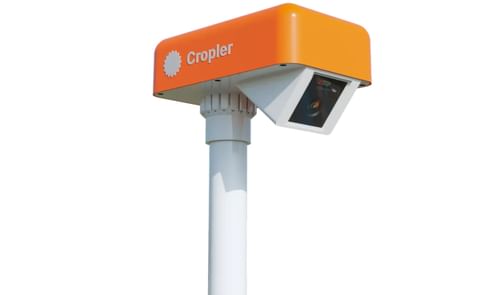Potato cultivation is a dynamic agricultural process that combines traditional knowledge with modern agronomy to produce one of the world’s most important food crops. Success in potato farming depends on careful attention to soil, climate, water, pest management, and harvesting techniques, ensuring both high yields and quality tubers for diverse markets.
- Aprender
- Cadena de Suministro de Patatas
- Cultivo de Patatas
Acerca del Cultivo de la Papa
Haga clic aquí para ampliar y obtener más información!
Site Selection and Soil Preparation
- Soil Requirements: Potatoes thrive in loose, well-drained soils such as sandy loam or loam, rich in organic matter. Soils should be friable and porous to allow tuber expansion and prevent waterlogging, which can cause rot and misshapen tubers.
- pH and Fertility: The ideal soil pH ranges from 5.2 to 6.4. Acidic to neutral soils are preferred, as alkaline soils increase the risk of diseases like common scab.
- Preparation: Deep tillage (20–31 cm) and the addition of organic matter or compost several weeks before planting help create optimal conditions. Raised beds are recommended for poorly drained soils.
Climate and Growing Conditions
- Temperature: Potatoes perform best in cool climates, with optimal daytime temperatures of 18–29°C and night time temperatures of 13–18°C. Excessive heat or frost can reduce yield and tuber quality.
- Sunlight: At least six hours of direct sunlight daily is necessary for healthy growth and tuber development.
- Altitude: The crop can be grown up to 3,000 meters above sea level, adapting as a summer crop in hills and a winter crop in tropical and subtropical regions.
Planting Material and Method
- Seed Potatoes: High-quality, disease-free seed potatoes are essential. Tubers or cut pieces with viable "eyes" are planted 15–20 cm apart at a depth of 5–7 cm, depending on variety and field conditions.
- Seed Rate: The amount of seed used varies with tuber size and variety, typically ranging from 1.5–2.88 tons per hectare.
- Spacing: Proper spacing ensures uniform growth and maximizes yield potential.
Irrigation and Water Management
- Water Needs: Potatoes require 500–700 mm of water over a 120–150 day growing cycle, with increasing demand during tuber bulking.
- Irrigation Systems: Drip, sprinkler, and overhead irrigation are commonly used. Soil should remain consistently moist but not waterlogged; over-irrigation can lead to disease and nutrient leaching.
- Scheduling: More frequent irrigation is needed in sandy soils and during dry spells, while heavy soils hold moisture longer.
Crop Care and Nutrient Management
- Fertilization: Balanced application of nitrogen, phosphorus, and potassium supports healthy growth. Organic amendments improve soil structure and fertility.
- Hilling: Regular hilling (covering shoots with soil) protects developing tubers from sunlight, prevents greening, and encourages higher yields.
- Crop Rotation: Avoiding repeated potato cultivation in the same field helps reduce pest and disease buildup.
Pest and Disease Management
- Integrated Strategies: Use of resistant varieties, crop rotation, clean seed, and encouragement of natural pest predators are key practices.
- Major Threats: Pests like Colorado potato beetle, tuber moth, and nematodes, along with diseases such as late blight, bacterial wilt, and viruses, can significantly impact yield if not managed proactively.
Harvesting and Post-Harvest Handling
- Timing: Potatoes are harvested after vines die back and skins have set, usually a few weeks after flowering or foliage yellowing. Early harvesting results in immature potatoes with poor storability.
- Techniques: Mechanical harvesters or careful manual digging are used to avoid tuber injury. Pre-harvest vine killing helps toughen skin and extend storage life.
- Storage: Proper curing and storage in cool, dark, and well-ventilated conditions preserve tuber quality and reduce losses.
"Potato cultivation is a multifaceted process that requires careful management of soil, water, climate, and crop health. By integrating best practices and modern technology, farmers can achieve high yields and quality, supporting food security and meeting market demands worldwide.."
Explore Cultivo de Patatas Productos

Manitou - Steering ministick MSM
La Minipalanca de Dirección Manitou es una innovación única que reemplaza el volante tradicional con un sistema inteligente de minipalanca, lo que permite al operador dirigir el manipulador telescópico con el pulgar.

Field monitoring camera
Cropler, la empresa detrás de la primera cámara agrícola del mundo para monitoreo remoto de plantas, permite a los agricultores supervisar sus cultivos de manera remota con tecnología avanzada de cámaras.
Browse Companies Offering Cultivo de Patatas

M S International
El grupo M S comenzó su trayectoria en 1960 desde una pequeña tienda de comestibles en un pueblo. Se han expandido con el tiempo y las oportunidades en muchos campos, incluida la exportación de papas de grado para cortar.

SK Agri Exports
SK Agri Exports es uno de los principales exportadores de papas de mesa y papas para chips de la India.
Agricultura Inteligente

Agricultura Inteligente
En la agricultura inteligente cubrimos todos los procesos de decisión (ya sea por Inteligencia Artificial, modelos informáticos o humanos) realizados en respuesta a las observaciones (incluidos los grandes volúmenes de datos) provenientes de los sensores o de otro modo para obtener el resultado más favorable (económico, sostenible) para los procesos agrícolas. Consideramos la agricultura de precisión como un subconjunto de la agricultura inteligente. Buscaremos más allá del cultivo de papas para hacerte pensar...
Obtenga más información sobre Agricultura Inteligente
Equipamiento para el Cultivo de Patatas

Equipamiento para el Cultivo de Patatas
El equipamiento para el cultivo de papas abarca toda la maquinaria pesada usada en la granja para cultivar papas.
Obtenga más información sobre Equipamiento para el Cultivo de Patatas
Servicios para el Cultivo de la Patatas

Servicios para el Cultivo de la Patatas
Servicios para productores de papa y las empresas que prestan estos servicios
Obtenga más información sobre Servicios para el Cultivo de la Patatas


